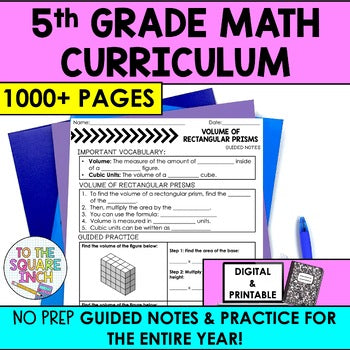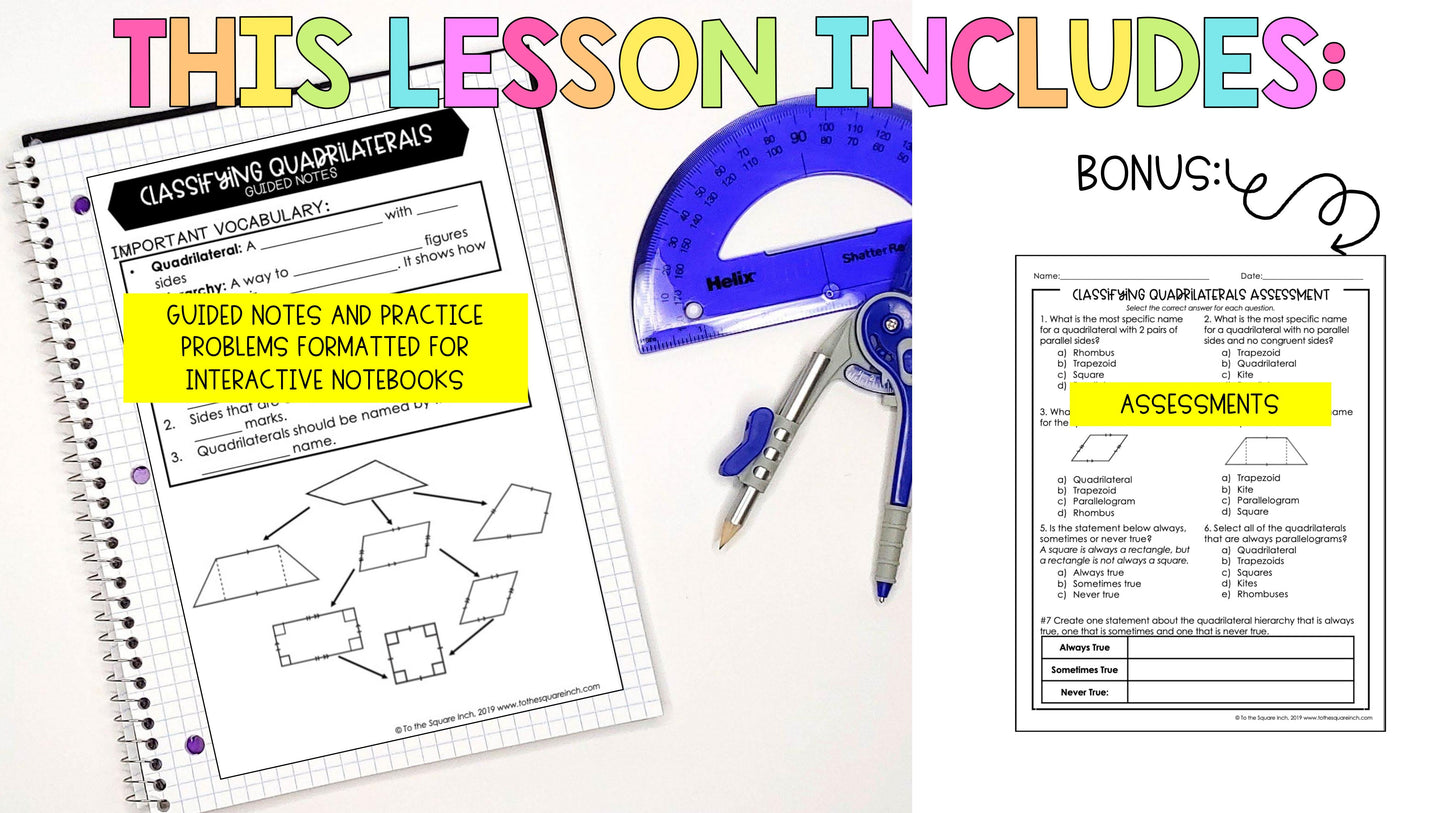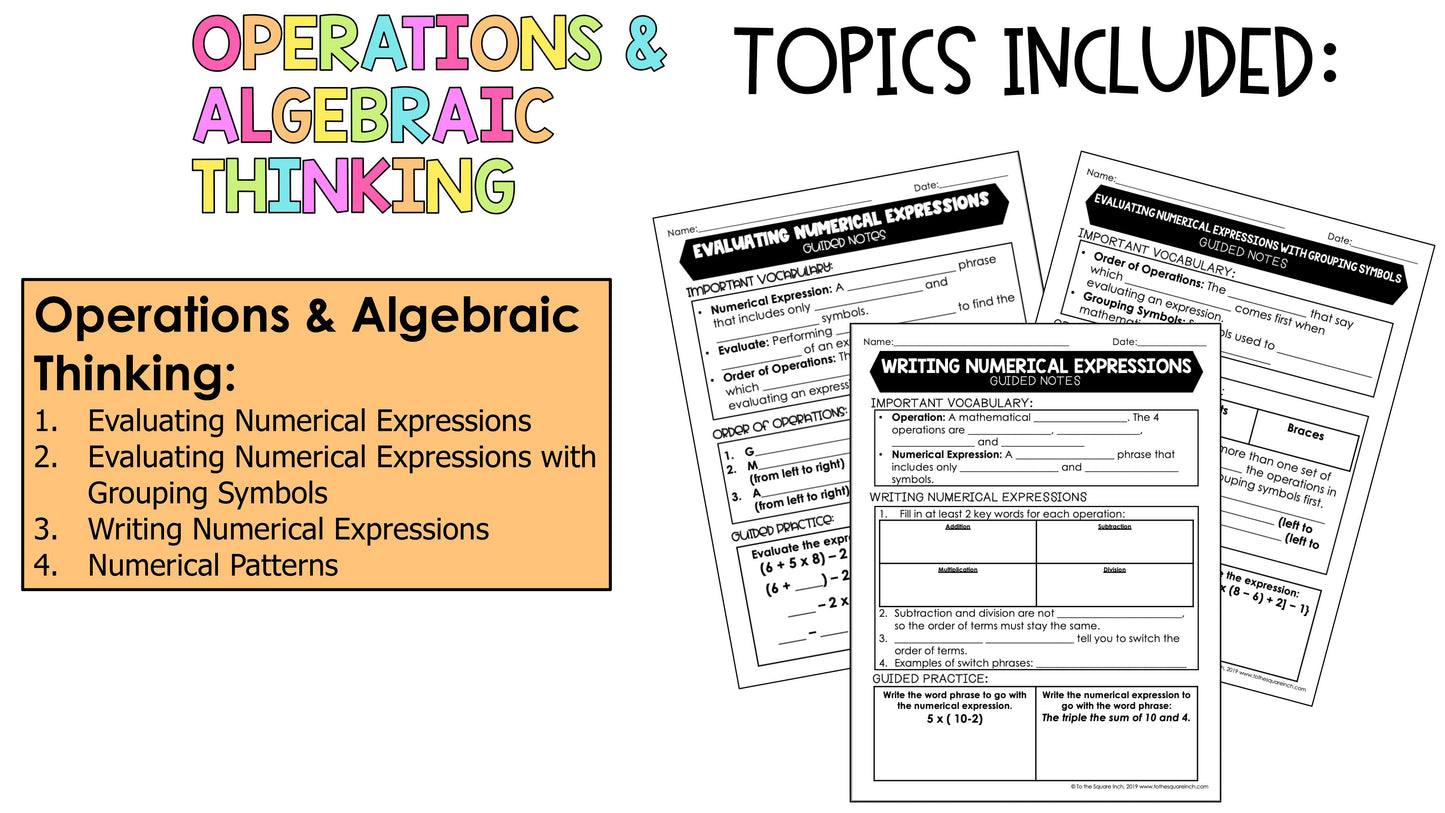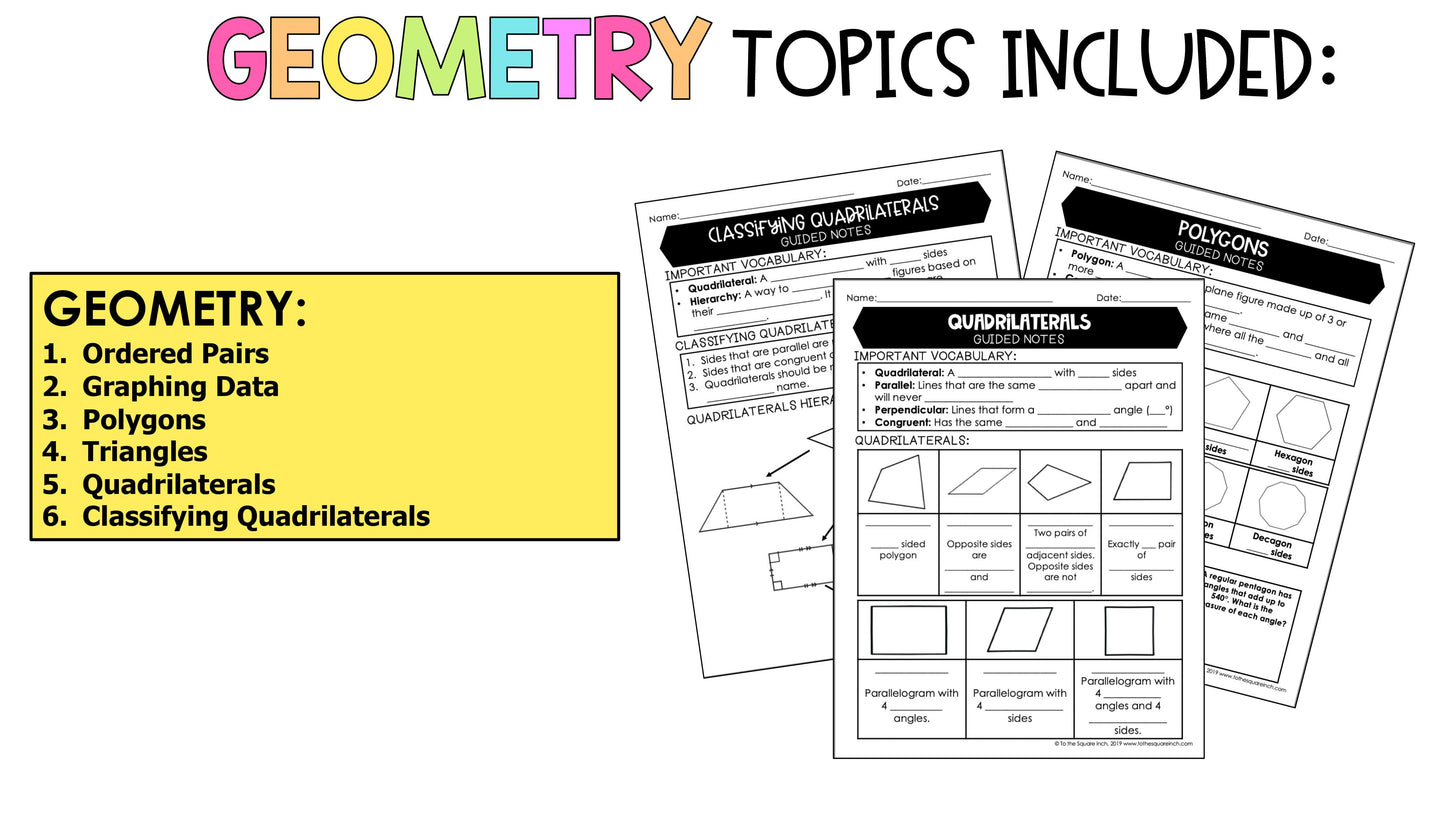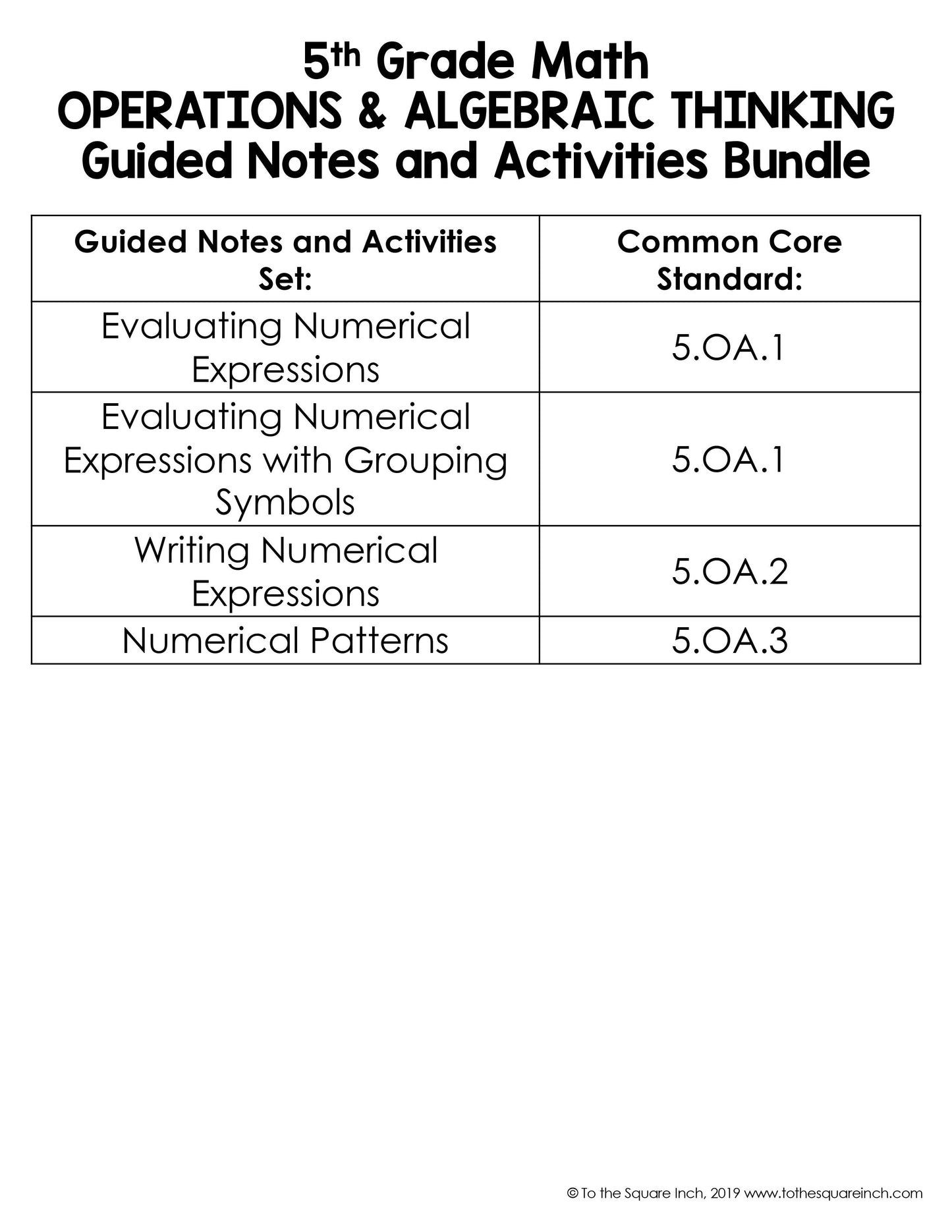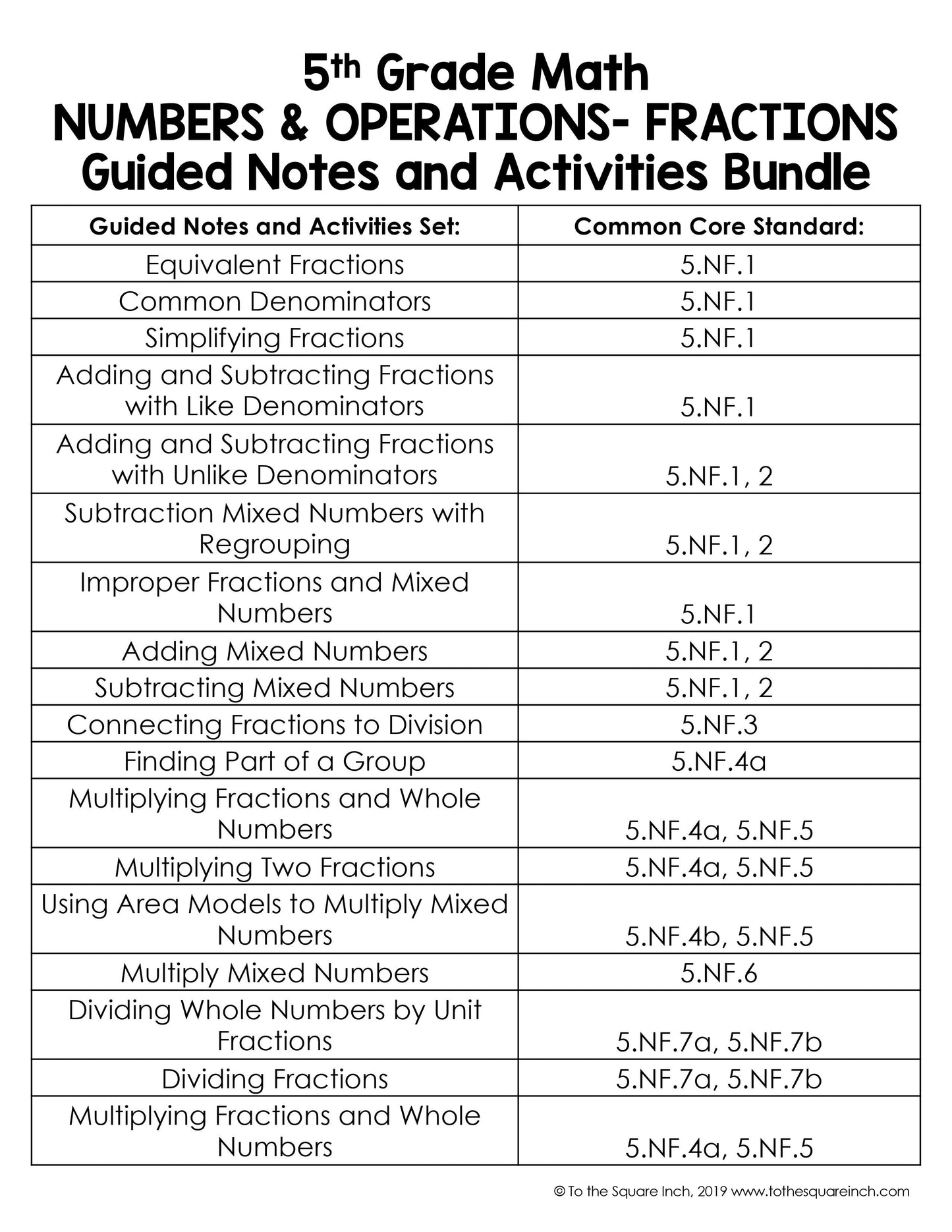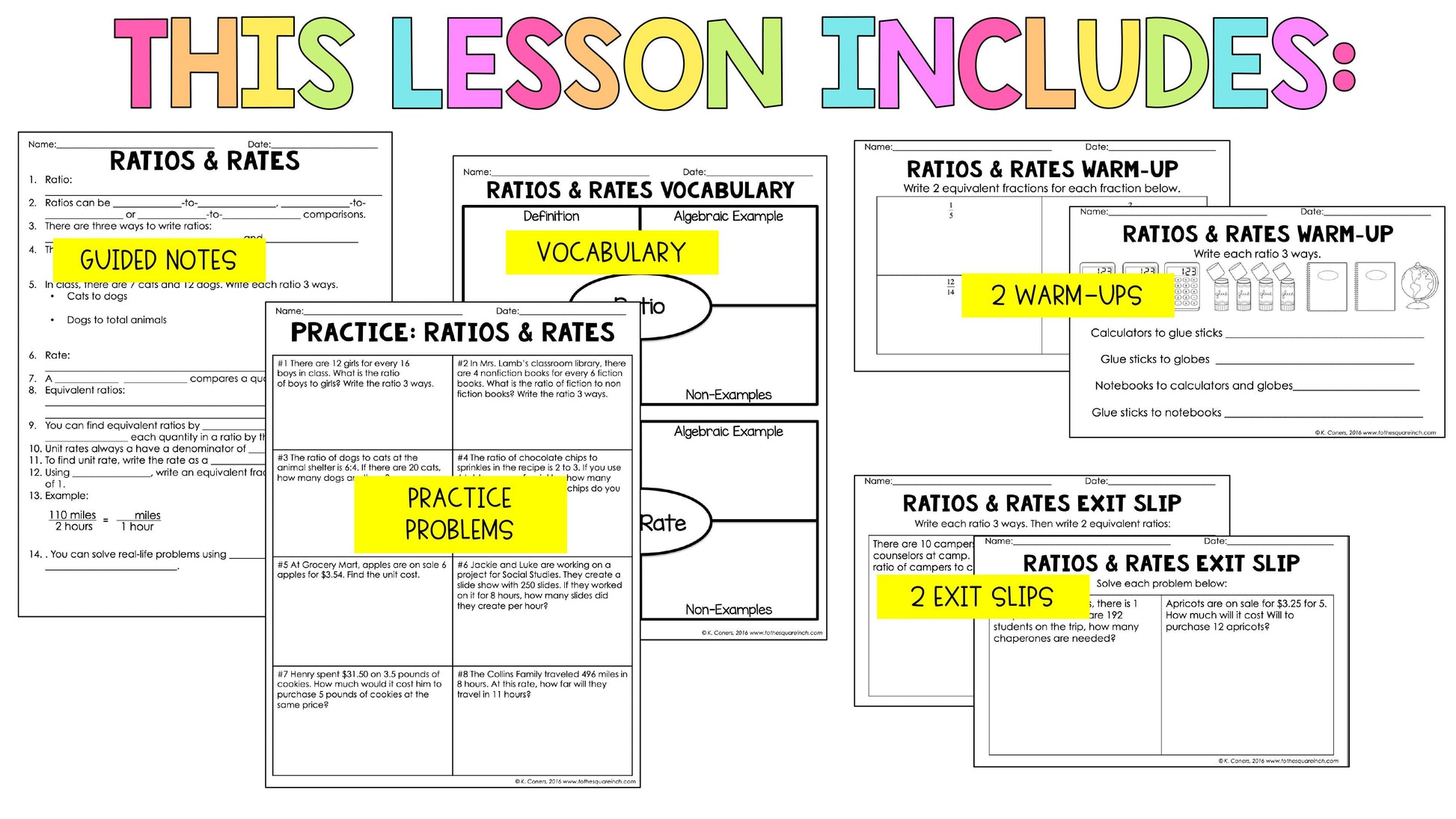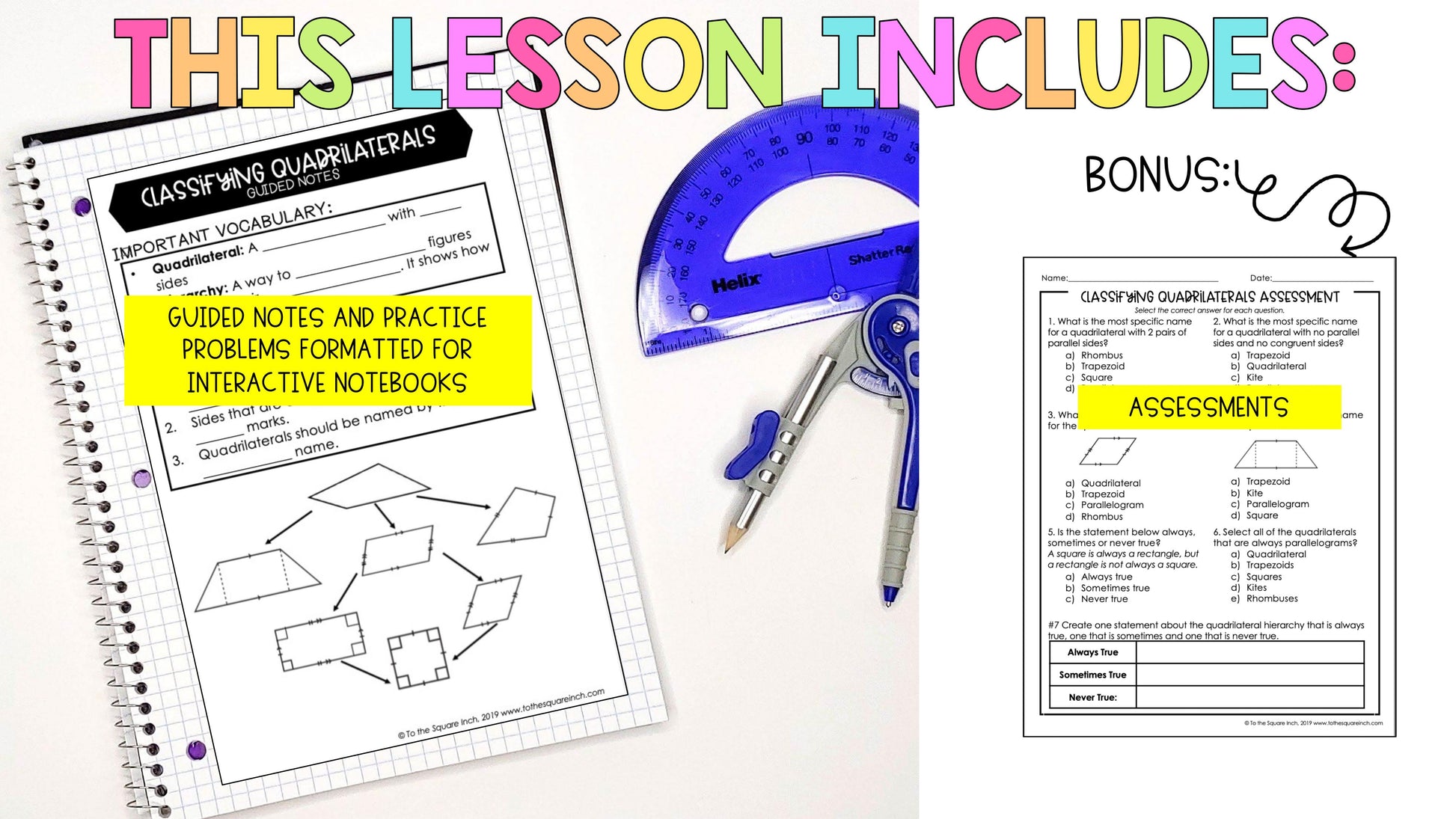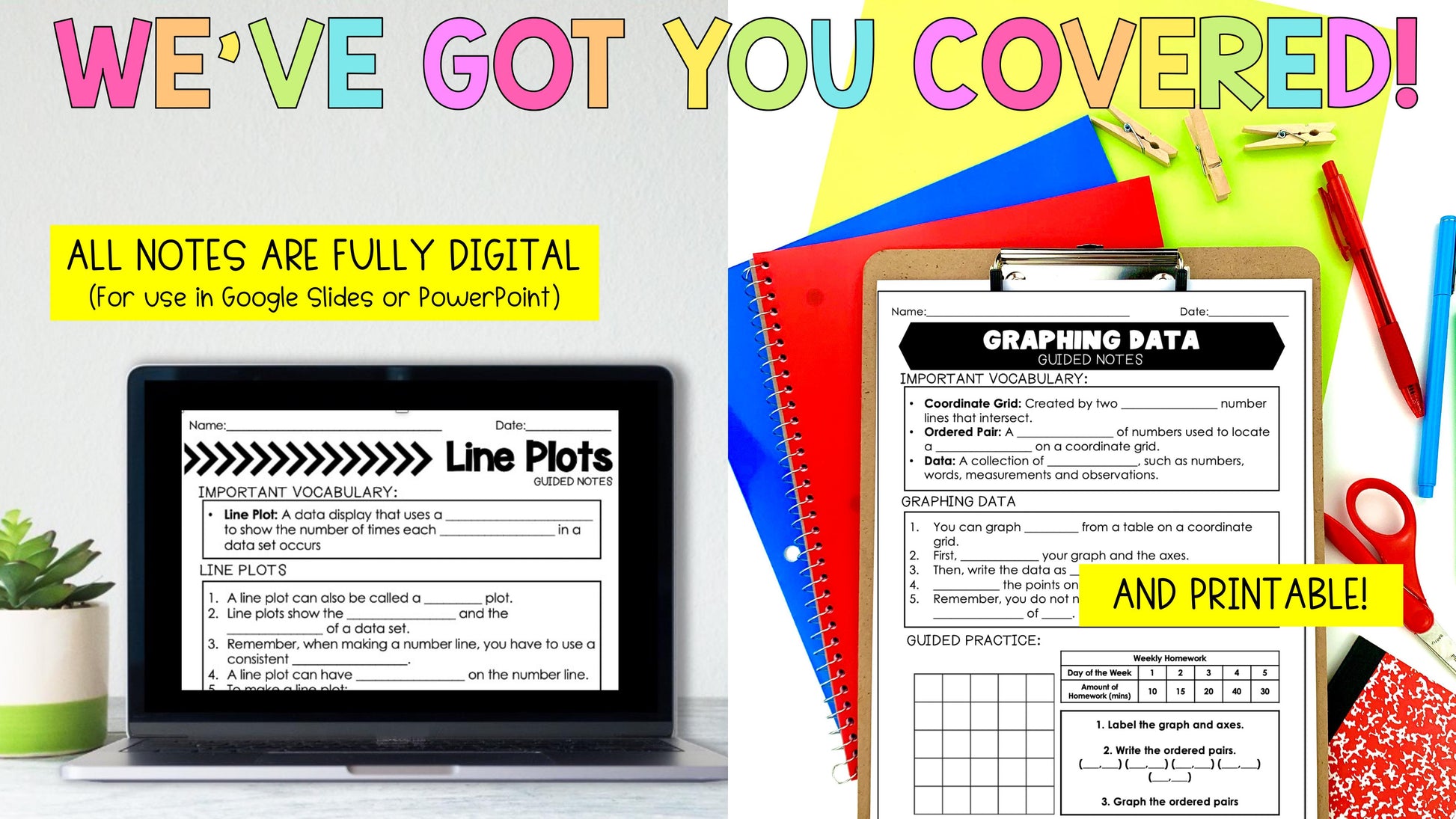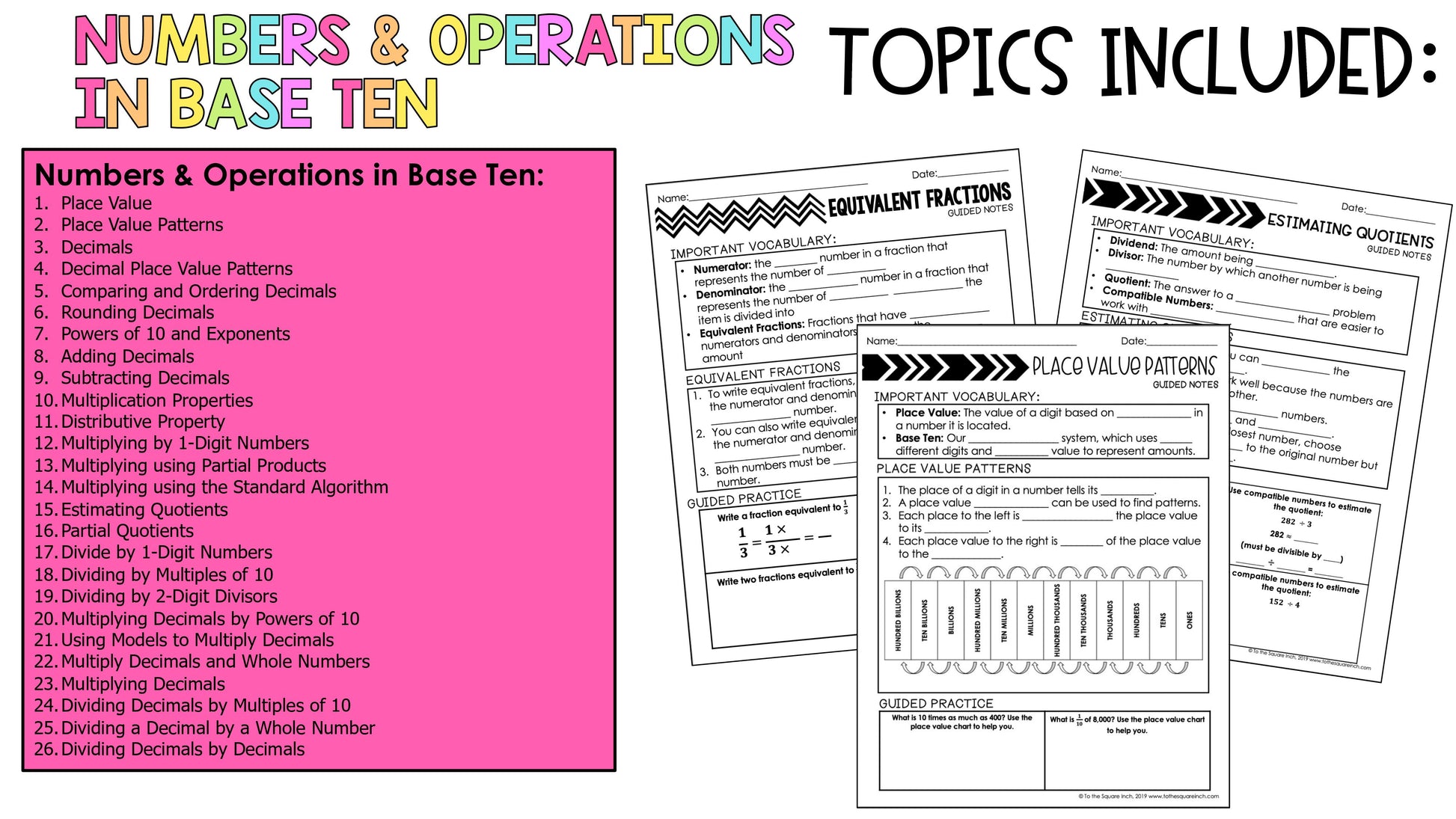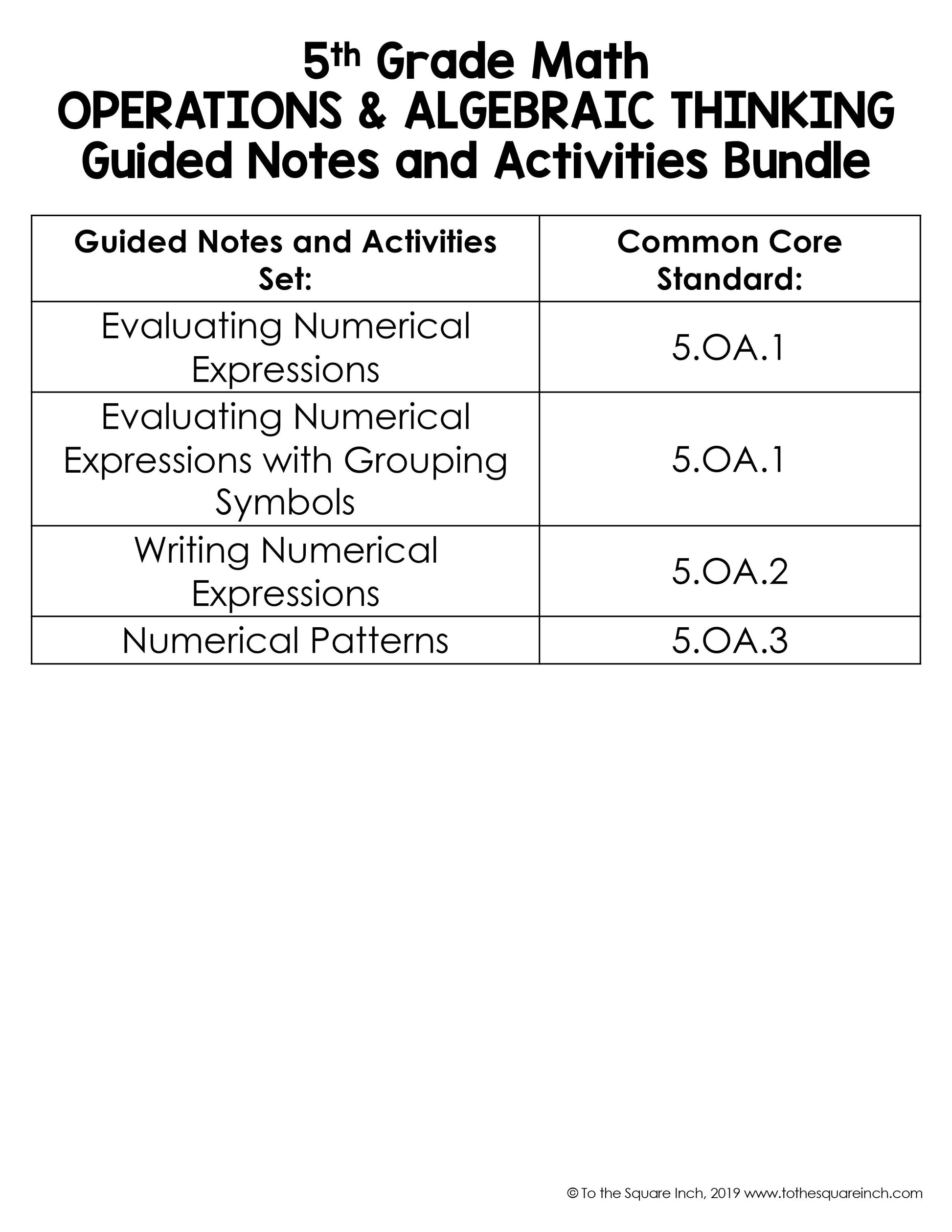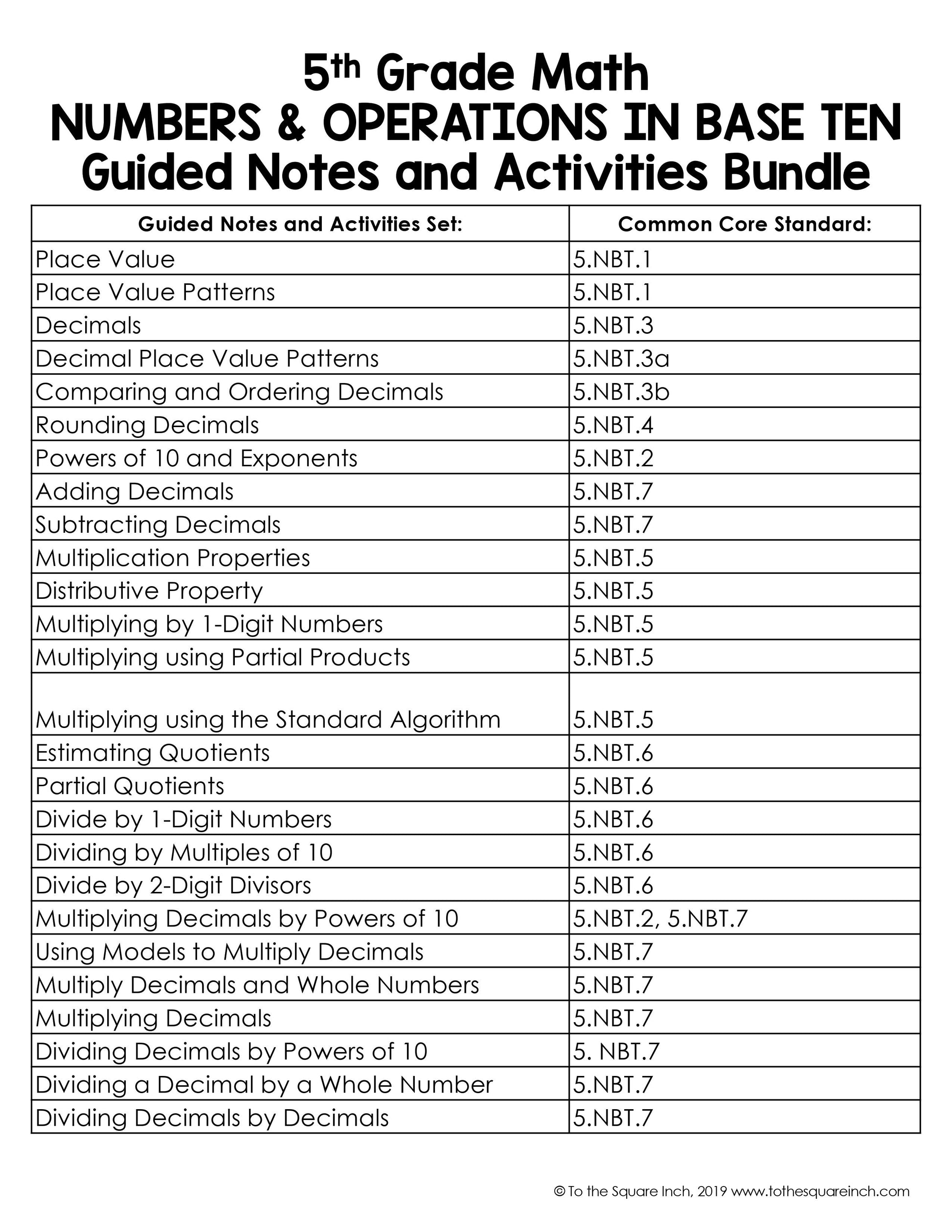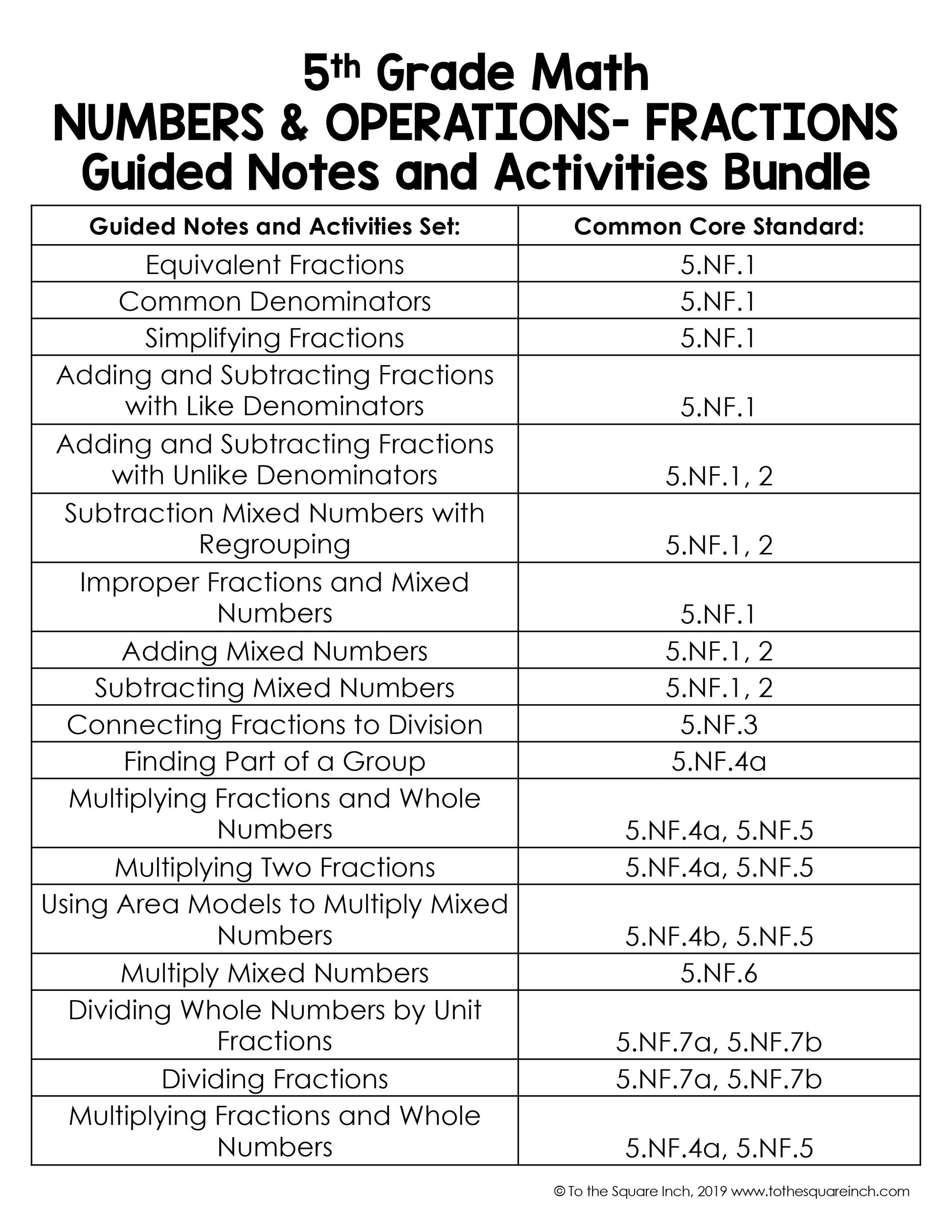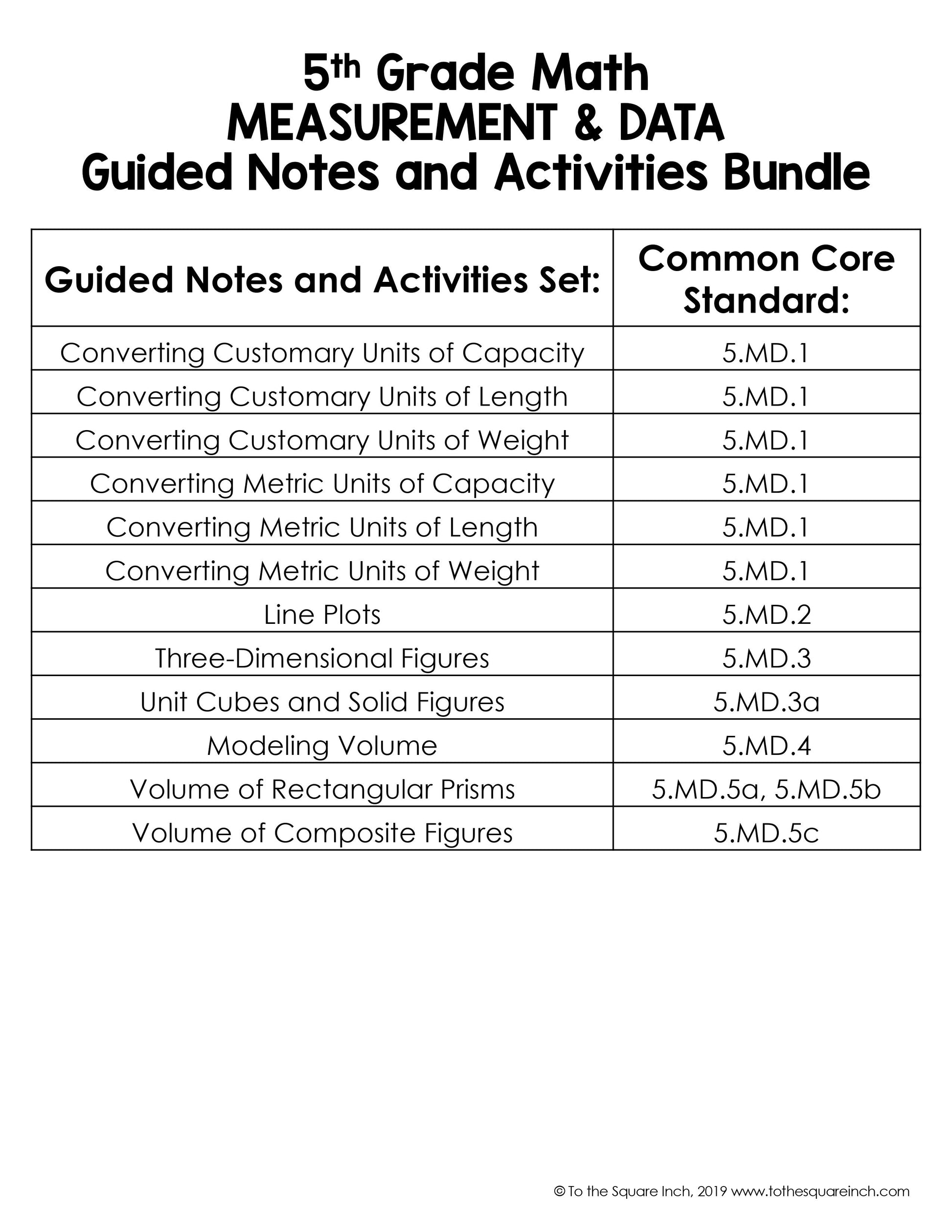5th Grade Math Guided Notes Curriculum
5th Grade Math Guided Notes Curriculum
Couldn't load pickup availability
Looking for a 5th Grade Math curriculum that is designed to help your students thrive and save you the time and energy of writing and designing them yourself? These full-year NO PREP guided notes are a classroom-proven resource that will have your students proficient in all 5th Grade Math common core standards! With a comprehensive design, these notes offer a structured approach that can be differentiated for every level of learner for the entire year.
Guided notes are an effective teaching model that maximize your students ability to use working memory to focus on content, rather than copying down notes. This resource is structured to include warm ups that build on prerequisite knowledge, in depth notes to fully teach each common core subject, vocabulary sheets to build on key concepts, exit slips to ensure understanding and an assessment to benchmark comprehension. This money saving bundle includes notes and practice printables formatted for interactive notebooks as well as a fully digital version of each note set.
This curriculum is broken down into 5 units (a full list of included topics can be found below):
- Operations and Algebraic Thinking
- Numbers and Operations in Base Ten
- Numbers and Operations - Fractions
- Measurement and Data
- Geometry
Here is everything that is included for each topic:
- Guided Notes including a separate printable formatted for Interactive Notebooks
- Digital Notes - fully digital version for classroom flexibility
- Practice Page including a separate printable formatted for Interactive Notebooks
- Frayer Models for Vocabulary Practice
- 2 different warm-ups (2 per page)
- 2 different exit slips (2 per page)
- 1 Assessment to benchmark understanding
- Answer keys
Here’s what you will love the most:
This entire math notes bundle is NO PREP! All answer keys are included and no additional materials are needed. You’ll also find that you’ll have more time to work through the concepts with your students as they will spend less time copying notes and more time mastering the content. The notes will also call their attention to key concepts that they should commit to memory.
Here are some guidelines for how to use this bundle:
- This resource can be successfully implemented using binders, folders or notebooks
- Warm Up Slips can be used at the beginning of the lesson to activate prior knowledge or you can use them to guide students through a new discovery.
- Vocabulary Practice - use these to establish foundation concepts at the outset of the lesson or as reinforcement after the notes portion
- Guided Notes - these sets are a comprehensive presentation of the subject matter, and progressively build from basic concepts to complete mastery. Students will follow along through a structured framework and retain the notes for reference and review.
- Independent Practice Problems -use these to reinforce understanding and provide a chance for your students to build skills and confidence
- Exit Slips - can be used to allow students to demonstrate mastery of the subject matter at the close of a lesson and prepare for future topics
- Assessment - use this to benchmark your students comprehension and supplement if necessary
Included Topics:
Operations and Algebraic Thinking
- Evaluating Numerical Expressions
- Evaluating Numerical Expressions with Grouping Symbols
- Writing Numerical Expressions
-
Numerical Patterns
Numbers and Operations- Fractions
- Equivalent Fractions
- Common Denominators
- Simplifying Fractions
- Adding and Subtracting Fractions with Like Denominators
- Adding and Subtracting Fractions with Unlike Denominators
- Subtraction Mixed Numbers with Regrouping
- Improper Fractions and Mixed Numbers
- Adding Mixed Numbers
- Subtracting Mixed Numbers
- Connecting Fractions to Division
- Finding Part of a Group
- Multiplying Fractions and Whole Numbers
- Multiplying Two Fractions
- Using Area Models to Multiply Mixed Numbers
- Multiply Mixed Numbers
- Dividing Whole Numbers by Unit Fractions
- Dividing Fractions
Numbers and Operations in Base Ten
- Place Value
- Place Value Patterns
- Decimals
- Decimal Place Value Patterns
- Comparing and Ordering Decimals
- Rounding Decimals
- Powers of 10 and Exponents
- Adding Decimals
- Subtracting Decimals
- Multiplication Properties
- Distributive Property
- Multiplying by 1-Digit Numbers
- Multiplying using Partial Products
- Multiplying using the Standard Algorithm
- Estimating Quotients
- Partial Quotients
- Divide by 1-Digit Numbers
- Dividing by Multiples of 10
- Dividing by 2-Digit Divisors
- Multiplying Decimals by Powers of 10
- Using Models to Multiply Decimals
- Multiply Decimals and Whole Numbers
- Multiplying Decimals
- Dividing Decimals by Multiples of 10
- Dividing a Decimal by a Whole Number
- Dividing Decimals by Decimals
Measurement and Data
- Converting Customary Units of Capacity
- Converting Customary Units of Length
- Converting Customary Units of Weight
- Converting Metric Units of Capacity
- Converting Metric Units of Length
- Converting Metric Units of Weight
- Line Plots
- Three-Dimensional Figures
- Unit Cubes and Solid Figures
- Modeling Volume
- Volume of Rectangular Prisms
- Volume of Composite Figures
Geometry
- Ordered Pairs
- Graphing Data
- Polygons
- Triangles
- Quadrilaterals
- Classifying Quadrilaterals
Guided notes are the foundation of my classroom. Here’s why:
- Guided notes keep all students actively engaged in class. Students follow along and fill in missing words and numbers and answer questions. They allow students to focus on problem solving rather than using their working memory to write down everything they hear the teacher say.
- Students create their own reference guide to help them remember and internalize what they learned in class. They can easily refer back to what they learned in previous classes to help them with spiral review, homework, studying for assessments and most importantly building on prior knowledge to learn new concepts.
- It helps students organize information and understand what is important. Middle school students are often new to the expectation of notetaking and guided notes are a perfect way to introduce this practice and perfect a lifelong skill. The blanks can be used as cues to help students decipher what is expected of them- they can tell if a longer definition should be recorded or a smaller blank means they should write an important vocabulary word or number.
- They relieve the stress that many students feel when expected to accurately copy diagrams, figures and equations off the board. Having them right on their notes page allows them to focus on problem solving and less about accurately copying complex notes off the board.
-
Guided notes are especially beneficial for students with special education needs and English Language Learners and can easily be adapted to accommodate specific needs.Copyright © To The Square Inch LLC
All rights reserved by the author.
Permission to copy for single classroom use only.
